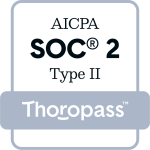Modern contact centers know automation and self-service solutions are required by today’s consumers, but many customer service interactions are too complex and require too much human empathy to be handled effectively by automated interfaces. The pinnacle of CX isn’t total automation — it’s the perfect blend between self-service and agent assisted service that delivers successful resolutions to callers as fast and easy as possible.
According toZendesk,69% of consumers first try to resolve their issue on their own, but less than one third of companies offer self-service options such as a knowledge base. Deploying effective self-service solutions is key to success, however. Zendesk also identified that the best CX performers, according to Benchmark data, are 76% more likely to offer self-service. Still, customer service leaders know the most complex customer service interactions still require live agents. Creating the right blend of automation and live agents must be the goal of all customer service leaders today.
“The pinnacle of CX isn’t total automation — it’s the perfect blend between self-service and agent assisted service that delivers successful resolutions to callers as fast and easy as possible.”
How To Automate
The first step to creating the right synergy between live agents and automation in customer service is identifying the right interactions to automate. A two-tier test is the best way to identify which call types are primed for automation.
1. The Value Test
The added value live agents bring to any customer interaction depends on a couple of variables. An interaction has less added value if it is a routine process as these are easily automated. Looking up information in a database, collecting standardized forms from consumers, frequently asked questions and knowledgebases — all of these popular call dispositions follow routine steps from beginning to end. The routine nature of these calls and their low complexity mean adding a human to the mix brings little value over a well-implemented automated solution.
2. The Volume Test
Once customer service professionals identify the low complexity calls primed for automation, they must determine which ones to automate first. Many businesses wouldn’t benefit from overhauling entire customer service systems from the ground up. A sudden wholesale pivot can do harm to businesses not built to change rapidly, or those with many layers of disparate systems to manage transitioning away from. The majority of businesses face these challenges. The solution is to automate the right interactions in the right order.
By using these two tests to plot all call types a contact center receives on a matrix, customer service leaders can easily determine where to focus their customer service automation efforts. Automating this way will deliver the biggest impact to customers, automating the most popular interactions while also benefiting agents by removing the low-value, tedious calls that lead to agent burnout from their plates.
Added Benefits of Synergetic Automation
1. Fast Interactions
According to research fromMicrosoft,more consumers rank “getting my issue resolved quickly” as the most important aspect of a satisfying customer service experience than any other issue. Today’s self-service capabilities instantly speed up customer service for any interaction where end-to-end automation is appropriate. Self-service tools like Zappix Visual IVR allow businesses to authenticate callers and gather critical information while customers wait on hold and push that information directly to agents, who can deliver the faster, more convenient experience customers desire. The added information makes experiences more enjoyable for callers and empowers CSRs to provide the best possible service.
2. Secure Interactions
Customer service agents working from home after COVID-19 normalized remote and hybrid work have needed new ways of handling sensitive information like payment processing and other tasks. Modern self-service tools let agents deliver the empathetic, human interactions they’re trained for, while allowing them to pass the final payment process off to secure self-service to complete a successful resolution.
3. Meaningful Interactions
Contact center agents excel at delivering empathetic, human experiences to consumers calling about complex, stressful situations. Their skill and expertise provide interactions that even the most advanced automation can’t match. When agents get bogged down in simple, straightforward, tedious calls, the ability to deliver powerful interactions where agents’ skills are really valuable diminishes. Self-service tools deflect these tiresome, repetitive tasks away from agents. Tools that deliver end-to-end automation and completely contain these tedious interactions empower agents to focus only on calls where their skills are most valuable. Freeing agents with successful automation takes the most simple interactions off their plates and empowers them to deliver the best service they can.
Many business leaders see customer service automation and self-service tools as a threat to customer service representatives. Automation isn’t about taking agents’ jobs — they’re in the process of empowering agents and providing them with just as many benefits as customers experience. Today’s self-service platforms like Zappix Visual IVR benefit live agents, consumers, and businesses as well. A successful resolution for everyone involved.






